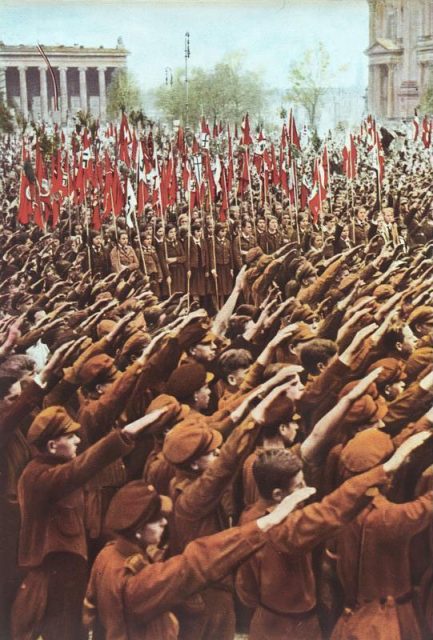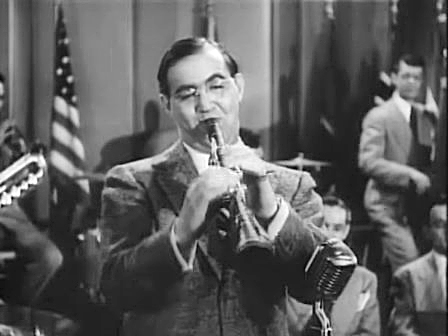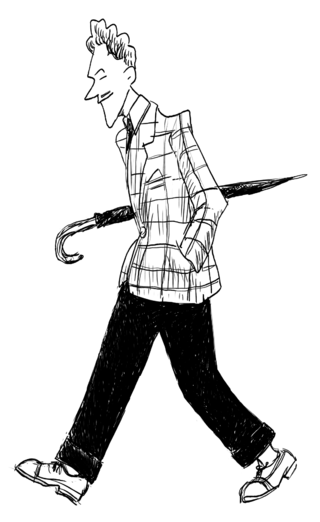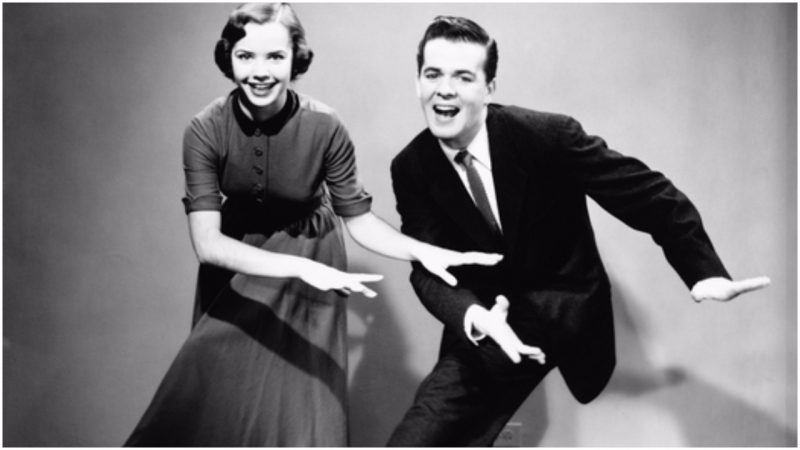As the Nazi Party took power in Germany in 1933, a complete crackdown on all “subversive” elements took hold. Having dealt with his political opponents in the years prior to his rise to the chancellorship, Hitler intended to finish the job by eradicating all potential opposition.
But in the schools and out on the streets, a silent flame tingled. Teenagers were rejecting the strict militarism and code of behavior bestowed by the Nazi Party through its youth organizations―the Hitler Youth and the League of German Girls.
Apart from loosely tied street gangs, kids mostly from working-class backgrounds who would enact in physical conflict with the Hitler Youth members, one particular underground faction was formed around a music genre that was on the rise in the 1930s: Swing.
These youngsters, dubbed the Swing Kids, nurtured a fascination with American Jazz and English clothes. Initially, the Swing Kids appeared in Hamburg, among the youth who attended the Gymnasium (high school for top achieving students likely to attend College), where they took obligatory English and French lessons.
They would dress like dandies, speak English to one another, dance all night, and grow their hair longer than the norms of “decency” permitted in Germany at the time.
The dress code included long, often checkered, sports jacket, preferably of an English brand; thick-soled shoes; umbrellas and tobacco-pipes as a sign of their Anglophilia; and last but not least, a dress-shirt button worn with a jeweled stone, which served as a secret insignia for the subculture.
The girls favored long, overflowing hairstyles, lacquered fingernails, and make-up, as opposed to the natural look and tight braids worn by the women-supporters of the Nazi Party, embodying the idea of a “Germanic woman.”

Prior to 1938, Hitler himself was trying to achieve an alliance with Great Britain, so the mentioned Anglophilia wasn’t considered quite so blasphemous until the years after the Munich Agreement (September 1938), which established clear opposition by the English Commonwealth against the Third Reich.
Around the movement, a true counter-culture was born, rejecting everything related to the Nazi Party and its ideals. Youngsters would often clash with the members of the Hitler Youth in numerous street brawls. They also made parodies of “volk” songs popular among the Hitler Youth and would ridicule the infamous Nazi salute― Sieg Heil―by responding with Swing Heil!
Jazz music, due to its affiliation with African-American and Jewish musicians, was considered degenerate by the Nazi State. The Hitler Youth especially denounced the genre as decadent and immoral, as well as being a dangerous import from America with the potential to weaken the triumphant will of the German people.
Such accusations were adopted by many, and swing and jazz was quickly becoming forbidden in clubs, cafes, and restaurants.
But what really enraged the Nazi authorities was the fact that the Swing Kids were also not so keen on the whole work ethic idea that arose in the height of the pre-war military-industrial expansion. Together with their pacifism, the Swing Kids perceived such work as a loss of individuality, as they would be forced to support the growing war machinery of the Reich.
This general feeling intensified as the war years progressed, and slave labor was employed in the form of the “undesirable elements” in German society or imported from occupied territories such as Communists and homosexuals.

During the war years, the authorities intensified their disapproval of the non-conforming youth by closing down many nightclubs and forbidding persons below the age of 21 to enter. Since most of the young men were drafted and sent to the front, the Swing Kids movement relied solely on teenagers who were between 14 and 18 years old.
However, this didn’t stop the rebellious youth from organizing their own parties in clandestine locations. The risk of being involved in such activities was becoming more and more dangerous.
The Swing Kids of Jewish origin were the first to feel the crackdown on the youth culture, for affiliation with the Swing Kids was an aggravating circumstance. Many Jews and half-Jews were persecuted well before others if they were known as Swing Kids.
Defiance achieved by a physical look and liberal views on debated subjects such as sexuality, patriotism, and morale quickly attracted the attention of Heinrich Himmler, the commander of the S.S. What he wrote in a letter to the notorious Nazi official Reinhard Heydrich, in 1942, serves as a testimony to the brutal crackdown on the counter-culture:
“My judgment is that the whole evil must be radically exterminated now. I cannot but see that we have taken only half measures. All ringleaders (…) are in a concentration camp to be re-educated (…) detention in concentration camp for these youths must be longer, 2–3 years (…) it is only through the utmost brutality that we will be able to avert the dangerous spread of anglophile tendencies, in these times where Germany fights for its survival.”

Even though a similar youth counter-culture arose in occupied France called the Zazou, the Swing Kids and their Austrian counterparts, Schlurfs, were persecuted and punished. As early as 1941, police actions were organized against the Swing Kids. Around 300 were arrested during the first operation alone.
Those considered ringleaders were transported to concentration camps, while others had their hair cut and were put under close monitoring by their school teachers.
The police repression in 1941 and 1942 sparked a second wave of Swing Kids who were much more politically aware and subversive than their predecessors. The groups actively distributed anti-fascist propaganda and were connected with the White Rose underground cell of the German resistance.
Günter Discher, who was the leader of the second wave, was arrested in 1943 and deported to the Moringen concentration camp. Discher survived the war and lived to tell the tale of the youth counter-culture that defied Hitler himself:
“For us kids back then swing music was a certain way of life, swing music meant unlimited freedom. We were looking for a-rockin’ thing.”
